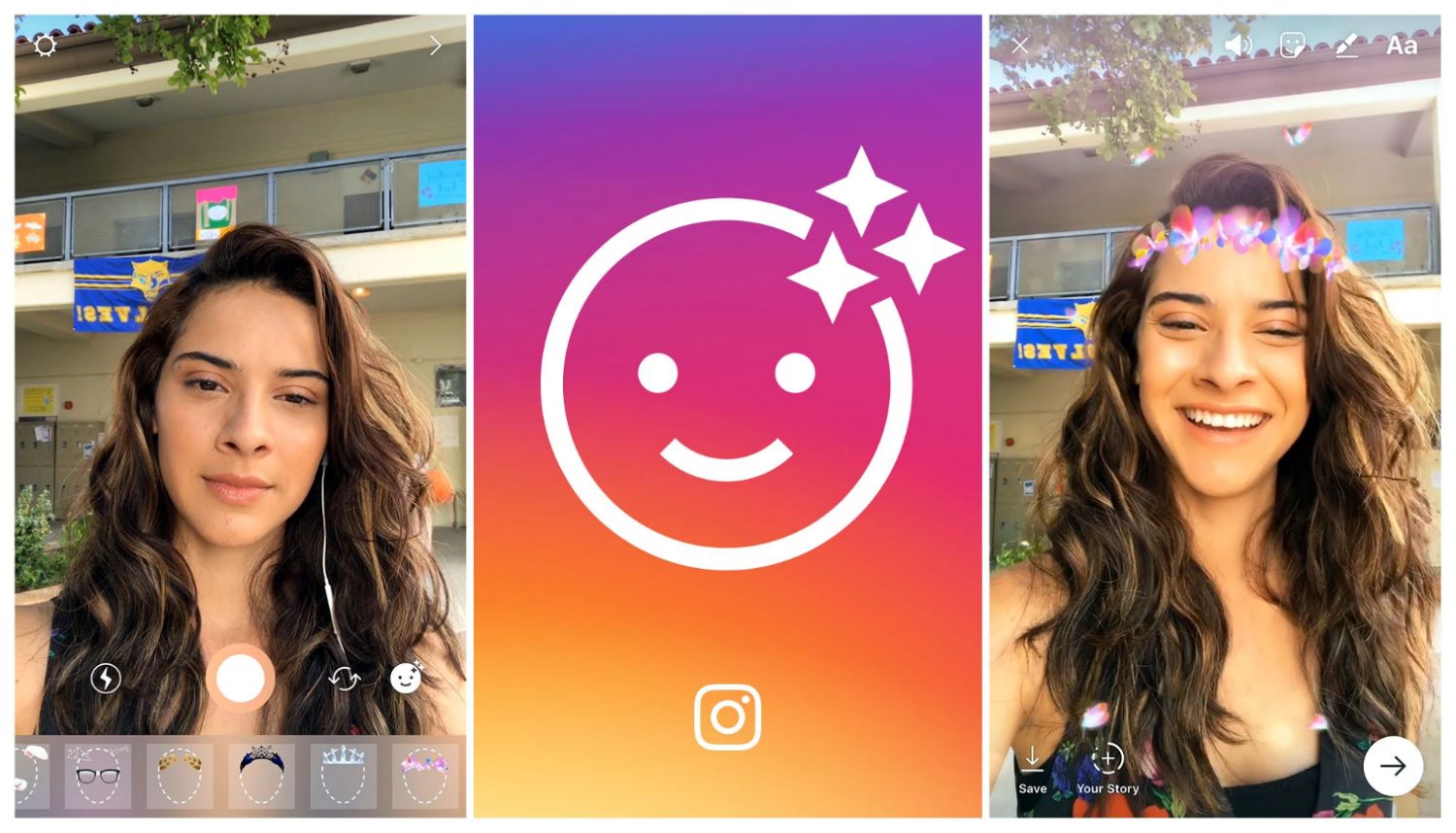Instagram’s Rise to Prominence: A Journey of Innovation and Adaptation
The rise of social media has undeniably transformed the way we connect, communicate, and consume information on a global scale. As of October 2023, the staggering statistics reveal a digital landscape teeming with over 4.95 billion individuals actively engaging across various social media platforms worldwide.
Among all these platforms, Instagram shines brightly as a leader in bringing people together. In 2018, Instagram achieved a monumental milestone by surpassing 1 billion monthly active users, signaling its immense popularity and widespread appeal.
However, the platform’s ascent didn’t stagnate there. By 2022, reports indicated that the number of Instagram users had doubled, reaching a staggering 2 billion individuals.
Moreover, as Instagram continued its growth trajectory, Kevin Systrom’s leadership and direction became increasingly influential in maintaining its competitive edge.
To truly grasp Instagram’s journey, first and foremost, it’s essential to delve into Kevin Systrom, the co-founder of Instagram.
Why Kevin Systrom Has a Perfect Background to Start Instagram
Hailing from Massachusetts, he was raised in an environment where technology played a significant role, with his mother working in the tech sector. His path led him across the country to Silicon Valley, where he pursued higher education at Stanford University, graduating with a degree in management science and engineering.
After his time at Stanford, Systrom’s career trajectory saw him gain invaluable experience at tech giants like Google, where he spent two years, before moving on to work at the website NextStop.
It was during this period that Systrom’s determination and passion for coding became evident, as he dedicated his nights and weekends to learning the craft and developing his own app.
Systrom’s early career also provided him with a valuable network of connections within the tech industry. Notably, he crossed paths with Mark Zuckerberg during Facebook’s nascent stages, with Zuckerberg even attempting to recruit Systrom to drop out of college and join him.

Additionally, Systrom’s internship at Odio, a podcasting company, further enriched his network, exposing him to individuals who would later become influential figures in companies like Twitter, none other than Jack Dorsey.
In addition to his professional pursuits, Kevin Systrom’s personal passion for photography deeply influenced his entrepreneurial journey.
From his role as the president of the photography club in high school to his immersive studies in Italy during college, Systrom’s dedication to the visual medium was unmistakable
With a solid footing in the Silicon Valley tech community, a web of influential connections, and a deep-seated passion for photography, Kevin Systrom epitomized the perfect blend of traits to pioneer a platform like Instagram.
Instagram’s Distinctive Appeal: Unpacking Its Unique Selling Propositions
Instagram, with its inception in October 2010, has captivated users worldwide with its unique blend of simplicity, engagement, and innovative features.
Simplicity Redefined: How Instagram Prioritized User Preferences
In the early stages of Instagram’s development, simplicity was always at the forefront of Kevin Systrom’s mind. When he was building the precursor to Instagram, called Burbn, he encountered challenges in making the app stand out in a crowded market.
Initially focused on location-sharing, Burbn faced the risk of being overshadowed by similar apps like Foursquare. Recognizing the need to pivot, Systrom and his partner Mike Krieger decided to streamline Burbn’s features and shift the focus towards photo-sharing.
The timing couldn’t have been better, with the release of the iPhone 4, boasting an improved camera and witnessing unprecedented sales figures. Inspired by this, Systrom and Krieger redeveloped Burbn into a dedicated photo-sharing app over the course of eight weeks.
By stripping away unnecessary complexities and honing in on the essence of capturing and sharing moments, they transformed Burbn into Instagram.
The name “Instagram” itself was a clever amalgamation of “instant” and “telegram,” reflecting the app’s core mission of providing users with a platform for instant communication through photos.

Upon its public launch in October, Instagram quickly gained traction, surpassing all expectations. The response was overwhelming, with servers crashing due to the sheer volume of sign-ups.
Within just the first day, 25,000 users had joined, a number that skyrocketed to a million in less than three months.
Despite the presence of other photo-sharing apps on the market, Instagram’s intuitive interface, coupled with its laser focus on simplicity and visual storytelling, set it apart from the competition.
How Filters and Sharing Catapulted the Platform Forward
The combination of filters and easy sharing functionality has been integral to Instagram’s widespread appeal and enduring success. These features have not only differentiated Instagram from its competitors but have also significantly contributed to its popularity among users.
Kevin Systrom’s insight into the importance of filters came from a conversation with his girlfriend during the early stages of developing the Burbn app.
She expressed reluctance to post photos on the app, citing that someone else testing it was consistently sharing photos that appeared much more visually appealing than hers.
Recognizing that users wanted their photos to look better before sharing them, Systrom realized the value of incorporating filters directly into the app. This foresight proved to be a game-changer, as it enabled users to enhance their photos effortlessly, without the need for third-party editing apps.

While competitors like Picplz had already established a presence in the market, Instagram’s focus on filters and editing tools set it apart.
Even Hipstamatic, a well-established competitor, lacked the social media integration and convenient sharing options that Instagram offered.
Apple’s recognition of Instagram as the app of the year in 2010 further validated the platform’s appeal, highlighting the significance of its filter and editing capabilities.
By 2012, Instagram had amassed an impressive user base, surpassing 30 million users, a testament to its rapid growth and widespread adoption.
Recognizing the need to cater to a broader audience, Instagram made a pivotal decision to release its Android app. Prior to this, the platform was exclusively available to iPhone users, but the introduction of the Android app marked a significant expansion, allowing millions of Android users to join the Instagram community.
What Makes Instagram Stories So Incredibly Engaging?
The introduction of Instagram Stories in 2016 marked a significant evolution in the platform’s functionality, offering users a new way to share content that would disappear after 24 hours.
This seemingly simple feature addressed a growing concern among users who felt pressured to curate their Instagram posts meticulously, fearing that anything less than perfect would remain on their profile indefinitely.
Snapchat had pioneered the concept of ephemeral content with its Stories feature, providing users with a platform where imperfection was embraced, knowing that posts would vanish after a brief period. This approach resonated with many users, particularly those seeking a more casual and spontaneous way to share moments.
In 2013, Snapchat introduced Stories, presenting photos and videos in chronological order that would disappear after 24 hours. Instagram recognized the potential of this format and reportedly made a bold move to acquire Snapchat for $3 billion.
However, Snapchat’s rejection of the offer prompted Instagram to develop its own version of Stories.
Acknowledging the inspiration drawn from Snapchat, Kevin Systrom admitted to taking the idea and implementing it into Instagram’s platform. He credited Snapchat for the concept, emphasizing that they deserved recognition for their innovation.
However, Instagram made slight improvements to the feature, such as the ability to pause and go back within the slideshow.
Despite the similarities, Instagram Stories quickly gained traction due to its massive user base, surpassing Snapchat in popularity.
“Part of what makes Stories such fantastic drivers of engagement is the combination of their disappearing nature – better check frequently to not miss anything! – combined with the simple mechanic of viewing them: tap tap tap,” said Ben Thompson – an American business, technology, and media analyst.
How Facebook Catalyzed Instagram’s Rise?
Back in 2012, Instagram’s rapid growth and expanding user base caught the attention of tech titans like Jack Dorsey, then head of Twitter, and Mark Zuckerberg, CEO of Facebook.
With Instagram’s release of its Android app, bridging the gap between iOS and Android users, as mentioned above, Dorsey saw an opportunity and made a substantial offer of $500 million to acquire the platform.
However, Zuckerberg, recognizing the potential threat of two major competitors joining forces, swiftly countered with an unprecedented $1 billion acquisition offer, doubling the value that Instagram had recently been assigned in funding rounds and outbidding Twitter.
This acquisition marked a milestone for Facebook, representing its first major purchase at ten times the cost of any previous acquisition, including the later purchase of WhatsApp for a considerably higher sum.
The acquisition not only prevented Instagram from falling into the hands of a direct competitor but also strategically positioned Facebook to dominate the burgeoning photo-sharing market.
Under Facebook’s ownership, Instagram benefited from the support of a larger company, gaining access to resources such as design, marketing, and engineering teams.
This support enabled Instagram to accelerate its development and introduce new features to stay competitive in the ever-evolving social media landscape.

From video sharing in 2013 to the launch of Reels in 2020 to rival platforms like TikTok, Instagram continued to innovate and expand its offerings.
Despite having 30 million users at the time of acquisition and no revenue stream, Instagram’s growth trajectory under Facebook’s umbrella was notably smoother.
Zuckerberg himself acknowledged the synergies between the two platforms, stating that Instagram leveraged Facebook’s infrastructure to grow more than twice as quickly as it would have independently.
Mark Zuckerberg posted about the transaction on his Facebook page, “This is an important milestone for Facebook because it’s the first time we’ve ever acquired a product and company with so many users. We don’t plan on doing many more of these, if any at all. But providing the best photo sharing experience is one reason why so many people love Facebook and we knew it would be worth bringing these two companies together.
Kevin Systrom and Mike Krieger, co-founders of Instagram, remained at the helm of the company following the acquisition, serving as CEO and CTO, respectively.
However, tensions reportedly arose between the Instagram team and Zuckerberg over the direction of the platform. This eventually led to Systrom and Krieger’s departure from their positions in 2018, marking the end of an era for Instagram under their leadership and sparking discussions about the platform’s future trajectory within the Facebook ecosystem.
The Premier Platform for Influencer Marketing and Brand Growth
Instagram’s effectiveness for influencer marketing stems from several key factors. Firstly, the platform boasts a massive user base, with a significant portion actively following content creators. This high engagement rate, especially among women, makes it an ideal environment for influencer collaborations.
Moreover, Instagram offers marketers a variety of options for content dissemination, from static posts to stories that gain prime visibility at the top of users’ feeds. This versatility allows brands to tailor their campaigns to suit different objectives and target audiences.
One of Instagram’s major advantages is its efficiency. Unlike platforms like YouTube, where creating video content can be time-consuming, Instagram’s format allows for quick turnaround on posts. Even for stories, which may include short videos, the platform’s limitations on video length streamline the content creation process.
Additionally, Instagram provides opportunities for both short and long-form content through features like IGTV. This flexibility allows influencers to showcase their creativity and engage with their audience in various ways.
The platform’s extensive network of content creators, including micro-influencers, adds another layer of effectiveness to influencer marketing on Instagram. These creators are often perceived as more relatable and authentic, enhancing the impact of branded content on users.
In contrast to Facebook, Instagram offers a less crowded advertising space, providing brands with greater visibility and potential for success.









